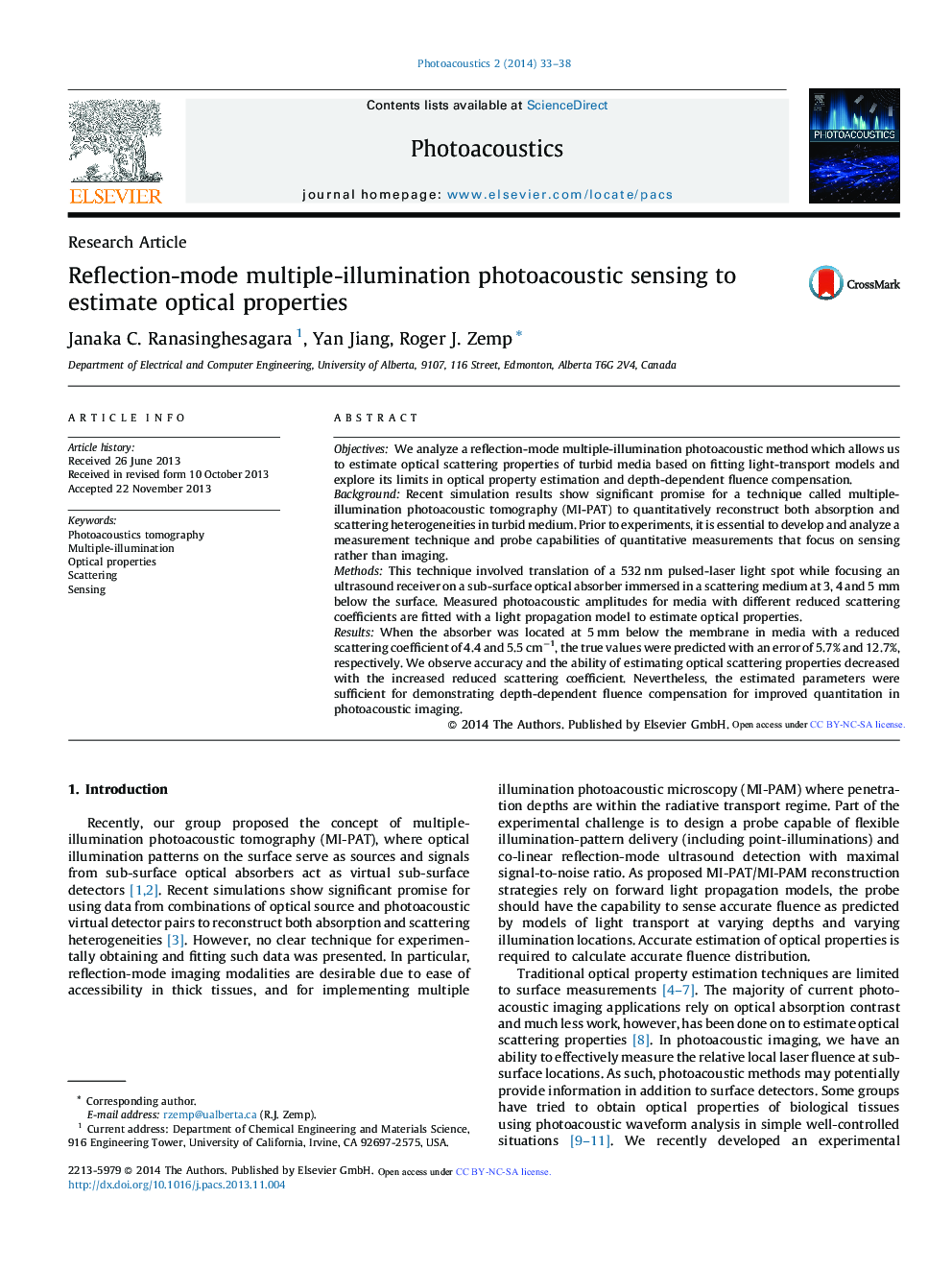| Article ID | Journal | Published Year | Pages | File Type |
|---|---|---|---|---|
| 562770 | Photoacoustics | 2014 | 6 Pages |
ObjectivesWe analyze a reflection-mode multiple-illumination photoacoustic method which allows us to estimate optical scattering properties of turbid media based on fitting light-transport models and explore its limits in optical property estimation and depth-dependent fluence compensation.BackgroundRecent simulation results show significant promise for a technique called multiple-illumination photoacoustic tomography (MI-PAT) to quantitatively reconstruct both absorption and scattering heterogeneities in turbid medium. Prior to experiments, it is essential to develop and analyze a measurement technique and probe capabilities of quantitative measurements that focus on sensing rather than imaging.MethodsThis technique involved translation of a 532 nm pulsed-laser light spot while focusing an ultrasound receiver on a sub-surface optical absorber immersed in a scattering medium at 3, 4 and 5 mm below the surface. Measured photoacoustic amplitudes for media with different reduced scattering coefficients are fitted with a light propagation model to estimate optical properties.ResultsWhen the absorber was located at 5 mm below the membrane in media with a reduced scattering coefficient of 4.4 and 5.5 cm−1, the true values were predicted with an error of 5.7% and 12.7%, respectively. We observe accuracy and the ability of estimating optical scattering properties decreased with the increased reduced scattering coefficient. Nevertheless, the estimated parameters were sufficient for demonstrating depth-dependent fluence compensation for improved quantitation in photoacoustic imaging.
